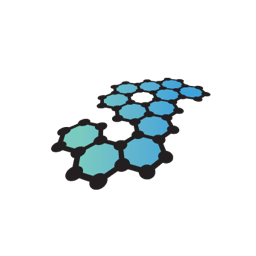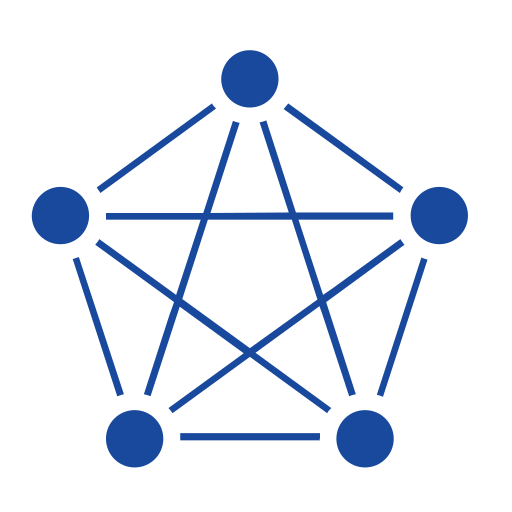Graphite vs TDengine
A detailed comparison
Compare Graphite and TDengine for time series and OLAP workloads
Learn About Time Series DatabasesChoosing the right database is a critical choice when building any software application. All databases have different strengths and weaknesses when it comes to performance, so deciding which database has the most benefits and the most minor downsides for your specific use case and data model is an important decision. Below you will find an overview of the key concepts, architecture, features, use cases, and pricing models of Graphite and TDengine so you can quickly see how they compare against each other.
The primary purpose of this article is to compare how Graphite and TDengine perform for workloads involving time series data, not for all possible use cases. Time series data typically presents a unique challenge in terms of database performance. This is due to the high volume of data being written and the query patterns to access that data. This article doesn’t intend to make the case for which database is better; it simply provides an overview of each database so you can make an informed decision.
Graphite vs TDengine Breakdown
 |
 |
|
| Database Model | Time series database |
Time series database |
| Architecture | Graphite can be deployed on-premises or in the cloud, and it supports horizontal scaling by partitioning data across multiple backend nodes. |
TDengine can be deployed on-premises, in the cloud, or as a hybrid solution, allowing flexibility in deployment and management. |
| License | Apache 2.0 |
AGPL 3.0 |
| Use Cases | Monitoring, observability, IoT, real-time analytics, DevOps, application performance monitoring |
IoT data storage, industrial monitoring, smart energy, smart home, monitoring and observability |
| Scalability | Horizontally scalable, supports clustering and replication for high availability and performance |
Horizontally scalable with clustering and built-in load balancing. TDengine also provides decoupled compute and storage as well as object storage support for data tiering in some versions |
Looking for the most efficient way to get started?
Whether you are looking for cost savings, lower management overhead, or open source, InfluxDB can help.
Graphite Overview
Graphite is an open-source monitoring and graphing tool created in 2006 by Orbitz and open sourced in 2008. Graphite is designed for storing time series data and is widely used for collecting, storing, and visualizing metrics from various sources, such as application performance, system monitoring, and business analytics.
TDengine Overview
TDengine is a high-performance, open source time series database designed to handle massive amounts of time series data efficiently. It was created by TAOS Data in 2017 and is specifically designed for Internet of Things (IoT), Industrial IoT, and IT infrastructure monitoring use cases. TDengine has a unique hybrid architecture that combines the advantages of both relational and NoSQL databases, providing high performance, easy-to-use SQL for querying, and flexible data modeling capabilities.
Graphite for Time Series Data
Graphite is specifically designed and optimized for time series data. It uses the Whisper database format, which efficiently stores and manages time series data by automatically aggregating and expiring data based on user-defined retention policies. Graphite supports a wide range of functions for querying, transforming, and aggregating time series data, enabling users to create custom graphs and dashboards. However, as Graphite focuses exclusively on time series data, it may not be suitable for other types of data or use cases that require more advanced data modeling or querying capabilities.
TDengine for Time Series Data
TDengine is designed from the ground up as a time series database, so it will be a good fit for most use cases that heavily involve storing and analyzing time series data.
Graphite Key Concepts
- Metric: A metric in Graphite represents a time series data point, consisting of a path (name), timestamp, and value.
- Series: A series is a collection of metrics that are all related to the same thing. For example, you might have a series for CPU usage, a series for memory usage, and a series for disk usage.
- Whisper: Whisper is a fixed-size, file-based time series database format used by Graphite. It automatically manages data retention and aggregation.
- Carbon: Carbon is the daemon responsible for receiving, caching, and storing metrics in Graphite. It listens for incoming metrics and writes them to Whisper files.
- Graphite-web: Graphite-web is the web application that provides a user interface for visualizing and querying the stored time series data.
TDengine Key Concepts
- Super Table: A template for creating multiple tables with the same schema. It’s similar to the concept of table inheritance in some other databases.
- Sub Table: A table created based on a Super Table, inheriting its schema. Sub Tables can have additional tags for categorization and querying purposes.
- Tag: A metadata attribute used to categorize and filter Sub Tables in a Super Table. Tags are indexed and optimized for efficient querying.
Graphite Architecture
Graphite’s architecture consists of several components, including Carbon, Whisper, and Graphite-web. Carbon is responsible for receiving metrics from various sources, caching them in memory, and storing them in Whisper files. Whisper is a file-based time series database format that efficiently manages data retention and aggregation. Graphite-web is the web application that provides a user interface for querying and visualizing the stored time series data. Graphite can be deployed on a single server or distributed across multiple servers for improved performance and scalability.
TDengine Architecture
TDengine uses a cloud native architecture that combines the advantages of relational databases (support for SQL querying) and NoSQL databases (scalability and flexibility).
Free Time-Series Database Guide
Get a comprehensive review of alternatives and critical requirements for selecting yours.
Graphite Features
Real-time monitoring and visualization
Graphite provides real-time monitoring and visualization capabilities, allowing users to track and analyze their time series data as it is collected.
Flexible querying and aggregation functions
Graphite supports a wide range of functions for querying, transforming, and aggregating time series data, enabling users to create custom graphs and dashboards tailored to their specific needs.
Data retention and aggregation
Graphite’s Whisper database format automatically manages data retention and aggregation, reducing storage requirements and improving query performance.
TDengine Features
Data ingestion
TDengine supports high-speed data ingestion, with the ability to handle millions of data points per second. It supports batch and individual data insertion.
Data querying
TDengine provides ANSI SQL support with additional that allows users to easily query time series data using familiar SQL syntax. It supports various aggregation functions, filtering, and joins.
Data retention and compression
TDengine automatically compresses data to save storage space and provides data retention policies to automatically delete old data.
Graphite Use Cases
Application performance monitoring
Graphite is widely used for monitoring the performance of applications and services, helping developers and operations teams track key metrics, such as response times, error rates, and resource utilization. By visualizing these metrics in real-time, users can identify performance bottlenecks, detect issues, and optimize their applications for better performance and reliability.
Infrastructure and system monitoring
Graphite is also popular for monitoring the health and performance of servers, networks, and other infrastructure components. By collecting and analyzing metrics such as CPU usage, memory consumption, network latency, and disk I/O, IT administrators can ensure their infrastructure is running smoothly and proactively address potential issues before they impact system performance or availability.
Business analytics and metrics
In addition to technical monitoring, Graphite can be used for tracking and visualizing business-related metrics, such as user engagement, sales data, or marketing campaign performance. By visualizing and analyzing these metrics over time, business stakeholders can gain insights into trends, identify opportunities for growth, and make data-driven decisions to improve their operations.
TDengine Use Cases
IoT data storage and analysis
TDengine is designed to handle massive amounts of time series data generated by IoT devices. Its high-performance ingestion, querying, and storage capabilities make it a suitable choice for IoT data storage and analysis.
Industrial IoT monitoring
TDengine can be used to store and analyze data from industrial IoT sensors and devices, helping organizations monitor equipment performance, detect anomalies, and optimize operations.
Infrastructure Monitoring
TDengine can be used to collect and analyze time series data from IT infrastructure components, such as servers, networks, and applications, facilitating real-time monitoring, alerting, and performance optimization.
Graphite Pricing Model
Graphite is an open-source project, and as such, it is freely available for users to download, install, and use without any licensing fees. However, users are responsible for setting up and maintaining their own Graphite infrastructure, which may involve costs related to server hardware, storage, and operational expenses. There are also several commercial products and services that build on top of or integrate with Graphite, offering additional features, support, or managed hosting options at varying price points.
TDengine Pricing Model
TDengine is open source and free to use under the AGPLv3 license. TDengine also offers commercial licenses and enterprise support options for organizations that require additional features, support, or compliance with specific licensing requirements.
Get started with InfluxDB for free
InfluxDB Cloud is the fastest way to start storing and analyzing your time series data.
